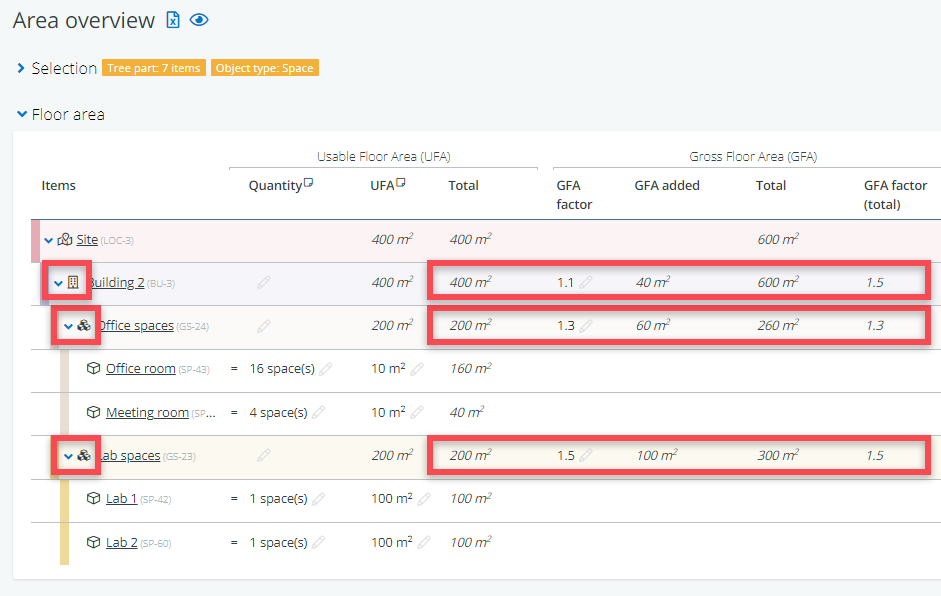For building projects, the area overview (also called room list or space program) is one of the most important overviews that is available in BriefBuilder.
The overview is a list of all the spatial objects in your project (buildings, groups of spaces, spaces, outdoor spaces) with their quantities and their sizes, plus a calculation of the project’s total size in terms of both usable floor area and gross floor area.
The overview can be accessed via the main menu on the left, under Overviews.
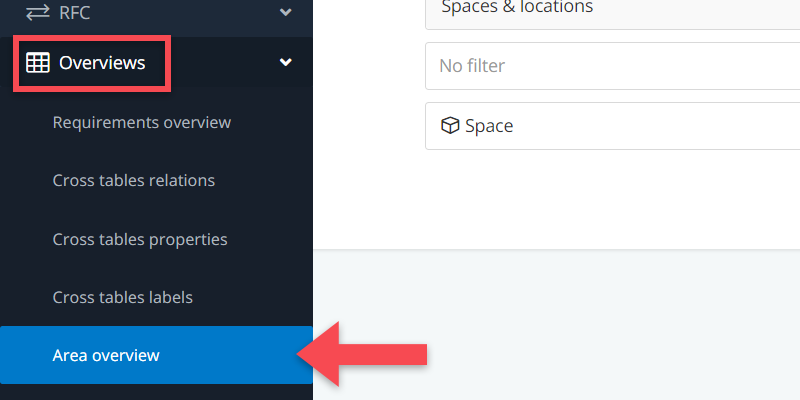
In this article, we’ll give a detailed explanation of how this overview works. You can also watch the video to get a quick impression.
Selecting or creating an area overview
On the area overview page, you can either select a predefined table definition (earlier created by either yourself or another project participant) or create a new table definition.
As a default, we provide two predefined table definitions:
- Usable floor area building(s): the size of the building(s).
- Usable area outdoor spaces: the size of the outdoor areas.

It is also possible to create your own overview, e.g. creating overviews that zoom in on a particular space type or particular part of the project. This can be done by clicking on the New button.

When doing so, you get to see the following selection options:
Tree(part)
Here you can select the parts of your project in which you are interested. This is mostly relevant for large projects where you may be interested to see the area overview of a particular building or building part.

Labels
If you have applied labels to your spaces, you can use this filter to select all spatial objects with a particular label to be able calculate the total area of that particular group of spaces.

Instance of / typical
If you are working with typical spaces, you can use this filter to include only particular types of instances in your selection (e.g. only meeting rooms or only work spaces)

Spaces or outdoor spaces
And, finally, you can choose whether you want to see an overview of (indoor) spaces or outdoor spaces. These are separate overviews because spaces and outdoor spaces are separate entities in BriefBuilder (as they can have different kinds of properties). The default is on spaces.

Show or Show (aggregated)
Once you have made your selection, you can proceed by clicking either the SHOW button or the SHOW (aggregated) button.
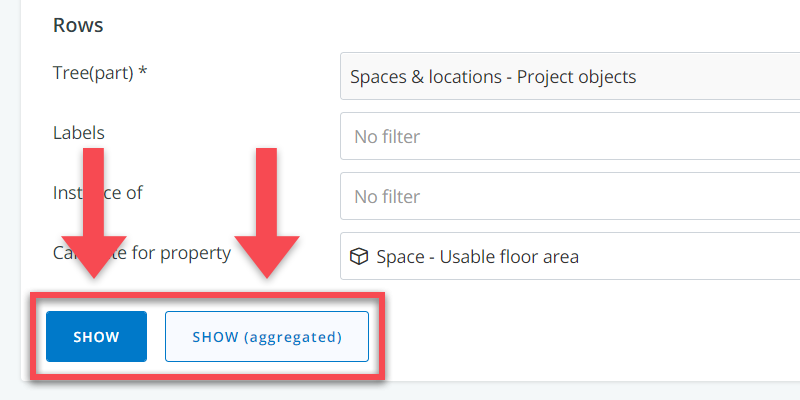
The SHOW button gives you an area overview that includes all the spatial objects, down to the level of individual spaces.
The SHOW (aggregated) button gives you an overview in which you only see the total square meters for locations, buildings, and groups of spaces. It doesn’t show the sizes of the individual spaces.

On the right side, the aggregated overview, without individual spaces.
The overview
Once you have made your selection—and you have clicked on Show—you get to see the actual area overview.
The overview consists of two parts:
- Usable floor area (UFA)
- Gross floor area (GFA)
Both have their own set of columns, which will be explained below.
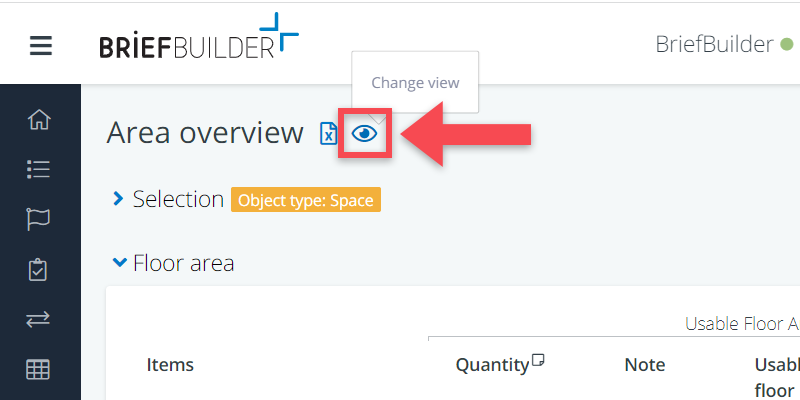
Usable floor area (UFA)
The UFA part shows all the defined requirements in your project in terms of usable floor area.
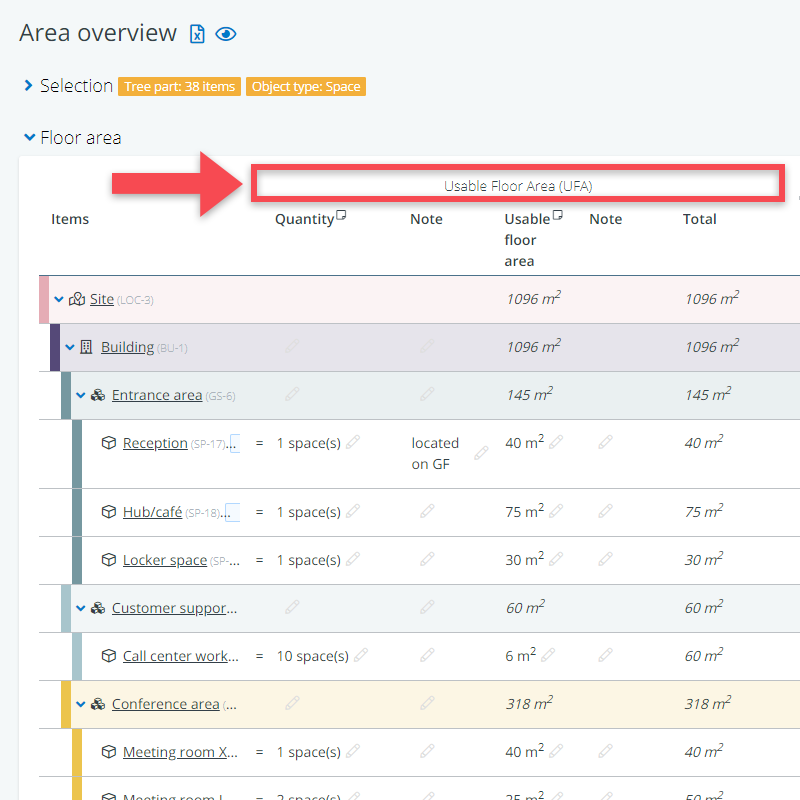
It features the following columns:
- Quantity: the number of required spatial objects (e.g. 1 reception)
- Quantity note: a possible note regarding the quantity (e.g. “located on ground floor”)
- Usable floor area: the size of a spatial object in terms of usable square meters (e.g. 40 sqm)
- Floor area note: a possible note regarding the space’s size (e.g. “cannot be smaller”)
- Total: the size per spatial object multiplied by its quantity (e.g. 60 smq if you have 10 call center workplaces of 6 smq each)

Gross floor area (GFA)
This part of the overview concerns the calculation of the gross floor area (GFA) of your project.
The exact definition of what GFA is can differ per country, but generally it is defined as the total floor area contained within the building (or a part of it) measured to the external face of the external walls and thus including floor area used for shafts, walls, etc.
The total GFA is calculated in BriefBuilder by multiplying the usable floor areas with a particular factor (called a GFA factor in BriefBuilder, also referred to as gross/net ratio or GFA/UFA ratio).
A simple example: if you have 40 sqm of UFA, and the GFA factor is 1.6, you will get a total of 64 sqm GFA (see example below).
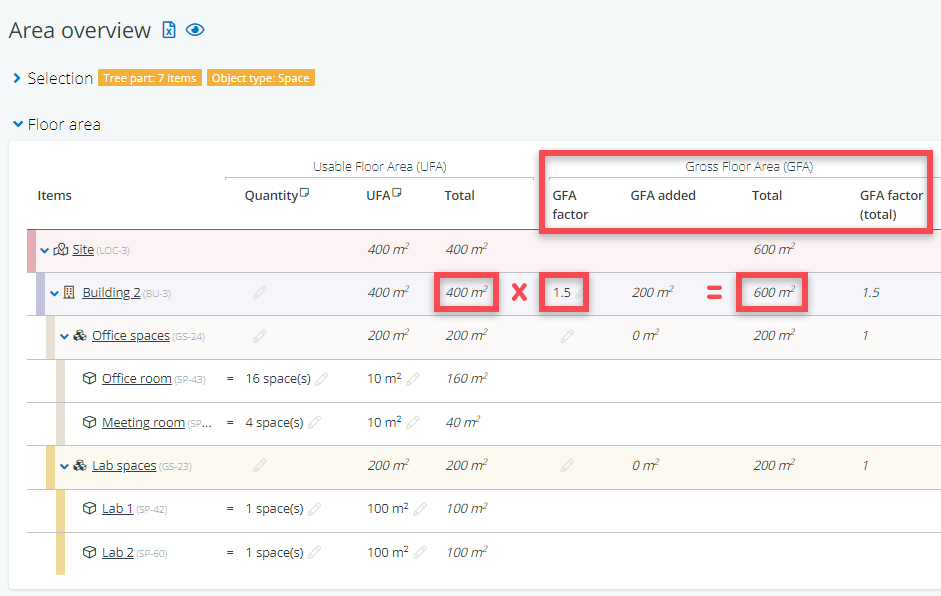
(click on image to enlarge)
In this part of the table, you can see the following columns:
- GFA factor: the factor that you want to apply to a building or specific group of spaces (1.5 in the example above)
- GFA added: the sqms that you are adding by applying the aforementioned GFA factor (200 sqm in the example)
- Total: the calculated total gross floor area. Please note that this figure is the sum of total usable floor area, plus the added GFA’s of that level, plus all the GFA’s that have been added on the underlying levels (e.g. 600 sqm in the example)
- GFA factor (total): the overall GFA factor, which is calculated by dividing the total gross floor by the total usable floor area (1.5 in the example above)
- Note: a possible note regarding the total of GFA (e.g. “should not exceed 70 sqm”)
How to go from UFA to GFA?
It is important to know that you can work with the GFA factor in three different ways:
(1) A GFA factor on building level
This is the simplest way of working with a GFA factor: you only define the factor on building level.
It is a very correct way of working in the sense that it takes into account that many (gross) areas, such as plant rooms or a central lobby, can only be assigned to the building as a whole and not to parts of it.
See the simple example below where a GFA factor of 1.5 has been applied to the building as a whole.
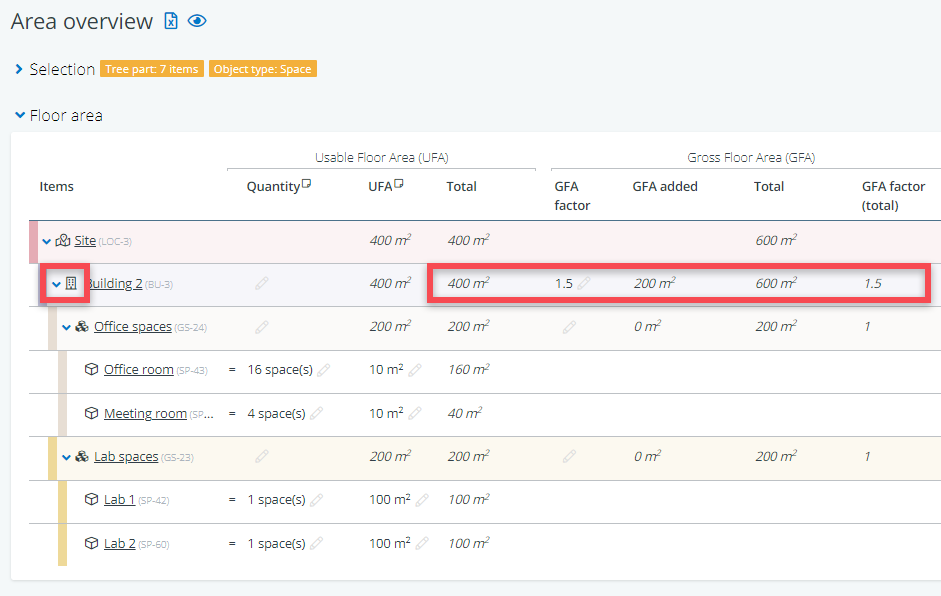
(2) GFA factors on group level (lowest level)
In some projects — in particular mixed-use projects — it is possible that you want to differentiate the GFA factor for different kinds of functions.
For example: when working on a research building, you may use a factor of 1.4 for the office spaces and a factor of 1.6 for the lab spaces, as the latter require more room for technical services. If this is the case, you can consider adding the factor on a group level. In this example, that would be the group ‘office spaces’ and the group ‘lab spaces’ (and thus not at building level).
See below for how that will turn out. It is a different way of calculating gross floor area, although it can still result in the same overall factor for the building as whole (in this case, 1.5).
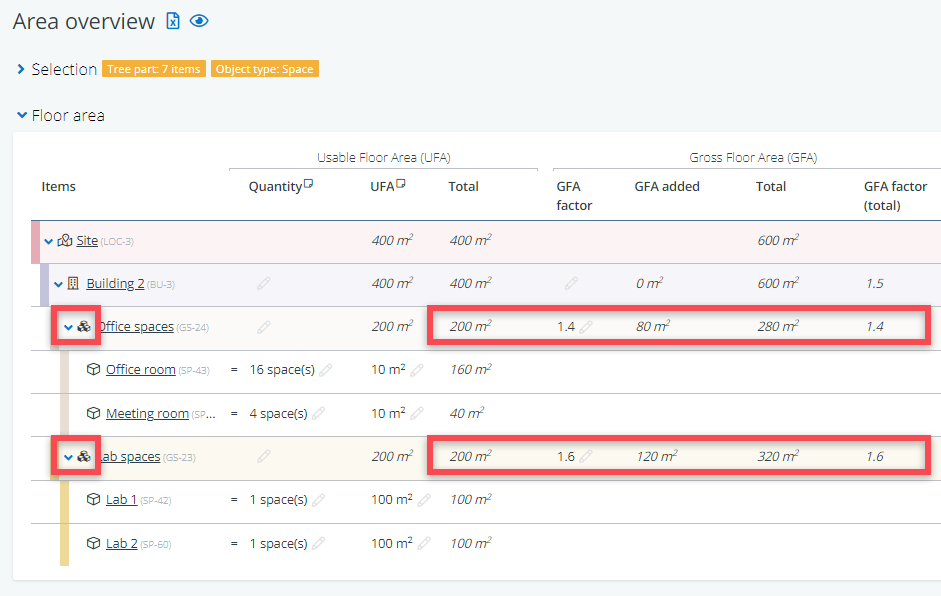
(3) GFA factors on multiple levels
It is also possible to combine these two approaches. In that case, you are adding GFA at multiple levels. Mathematically there is nothing wrong with this, but you have to be aware of what you are doing: you are adding square meters at every level for which you have defined a GFA factor.
See the example below where the lab spaces have a factor of 1.5 and the office spaces a factor of 1.3. And then an additional factor of 1.1 has been added on building level, resulting, again, in an overall factor of 1.5.
Note the difference in the GFA factor for building in the first column (1.1) and the GFA factor (total) in the last column (1.5). These are different because the first is only being used to add extra square meters, on top of the gross floor areas that have already been added on the levels below.
